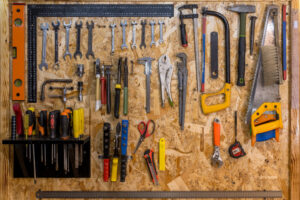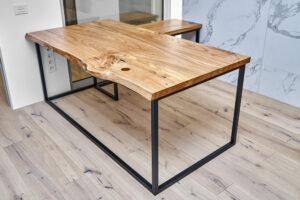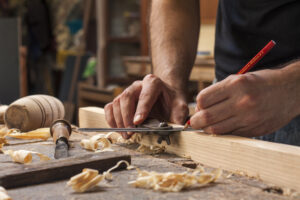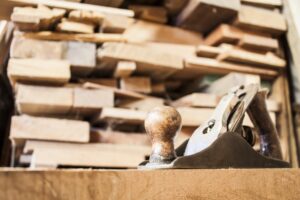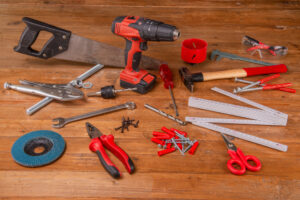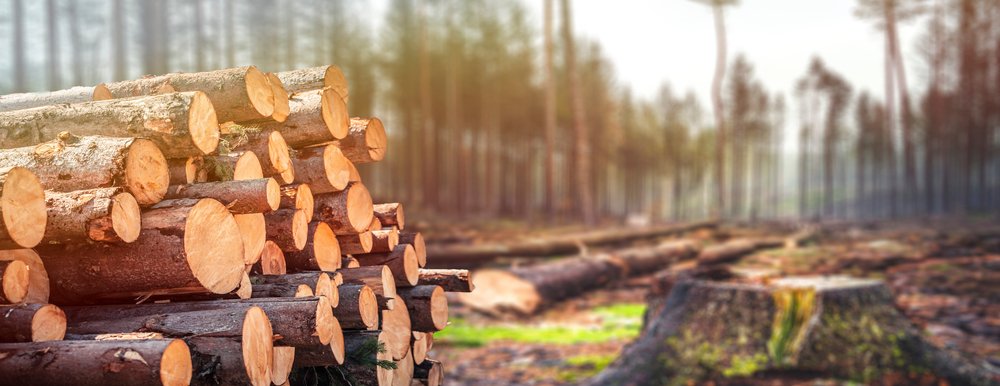
When it comes to carpentry and woodworking projects, it’s important to understand the different types of wood available. Wood can be classified into two main categories: hardwood and softwood. Hardwoods come from deciduous trees and include species like walnut, cherry, oak, mahogany, and maple. Softwoods, on the other hand, come from conifer trees and include varieties such as fir, redwood, pine, cedar, and spruce. Contrary to what their names might imply, the terms “hardwood” and “softwood” do not solely refer to the hardness or softness of the wood. Instead, they indicate the type of tree from which the wood is harvested. It’s also worth noting that bamboo and palm, although not deciduous trees, are classified as hardwoods. Understanding the difference between hardwood and softwood is crucial for choosing the right wood for your carpentry projects.
Key Takeaways:
- Wood can be classified into hardwood and softwood.
- Hardwoods come from deciduous trees and include species like walnut, cherry, oak, mahogany, and maple.
- Softwoods come from conifer trees and include varieties such as fir, redwood, pine, cedar, and spruce.
- The terms “hardwood” and “softwood” refer to the type of tree and not the actual hardness or softness of the wood.
- Understanding the difference between hardwood and softwood is crucial for choosing the right wood for your carpentry projects.
Difference Between Hardwood and Softwood
When it comes to understanding the different types of wood, it’s important to know the primary difference between hardwood and softwood. This difference lies in the type of trees they come from. Softwoods are harvested from conifer trees, which produce cones and have needles. Some common types of softwood trees include fir, redwood, pine, cedar, and spruce. On the other hand, hardwoods are milled from trees that don’t produce cones or needles. These deciduous trees have seeds and leaves instead. Examples of common hardwoods include walnut, cherry, oak, mahogany, and maple.
Now, it’s important to note that the terms “hardwood” and “softwood” do not necessarily indicate the hardness or softness of the wood itself. Instead, they refer to the type of tree the wood comes from. This means that a softwood can actually be harder than a hardwood, such as the case with some types of pine which are harder than certain varieties of oak. So, it’s essential to understand that the classification of hardwood and softwood is based on the tree species, not the physical characteristics of the wood.
| Hardwood | Softwood |
|---|---|
| Walnut | Fir |
| Cherry | Redwood |
| Oak | Pine |
| Mahogany | Cedar |
| Maple | Spruce |
As you can see from the table above, hardwoods and softwoods encompass a variety of tree species with distinct characteristics. Understanding the difference between hardwood and softwood trees will help you make informed decisions when selecting wood for your carpentry projects.
Types of Softwood for Carpentry
Softwoods are a popular choice for carpentry and woodworking projects due to their affordability and widespread availability. Let’s take a closer look at some common types of softwood used by woodworkers:
Cedar
Cedar is a softwood known for its distinctive reddish colour and a pleasant aroma. It is often chosen for outdoor projects due to its natural resistance to rot, insects, and decay. Cedar is commonly used for fences, siding, patio furniture, decking, and other exterior applications.
Pine
Pine is a versatile softwood commonly used in indoor and outdoor carpentry projects. It is relatively soft and easy to work with, making it suitable for various applications such as furniture, cabinetry, doors, trim, and flooring. Pine also offers an attractive grain pattern, adding visual appeal to woodworking projects.
Redwood
Redwood is a softwood with a distinct reddish hue, making it a popular choice for outdoor projects that require durability and resistance to the elements. Common applications for redwood include decks, garden borders, siding, and outdoor furniture. Its natural resistance to rot and insect infestation makes it a long-lasting option for exterior carpentry.
Fir
Fir is a softwood with a reddish-brown colour and a tight grain pattern. It possesses high strength and is commonly used for utility and construction projects. Fir is often selected for structural framing, flooring, decking, and plywood due to its stability and durability.
Spruce
Spruce is a light-coloured softwood that is commonly used in interior carpentry projects. It is known for its straight and fine grain, making it suitable for applications such as interior walls, moldings, trim, and musical instruments. Spruce is also used to construct doors, cabinets, and furniture.
Softwoods like cedar, pine, redwood, fir, and spruce offer a wide range of options for carpentry projects. Whether you’re working on an outdoor deck or a piece of indoor furniture, selecting the right type of softwood can contribute to the overall quality, aesthetics, and longevity of your project.
| Type of Softwood | Characteristics | Common Applications |
|---|---|---|
| Cedar | Light-coloured, straight grain, fine texture | Fences, siding, patio furniture, decks |
| Pine | Versatile, relatively soft, attractive grain | Furniture, cabinetry, doors, flooring |
| Redwood | Soft wood, reddish tint, resistance to decay | Decks, garden borders, siding |
| Fir | Reddish-brown, tight grain, high strength | Utility and construction projects |
| Spruce | Light-colored, straight grain, fine texture | Interior walls, moldings, trim, musical instruments |
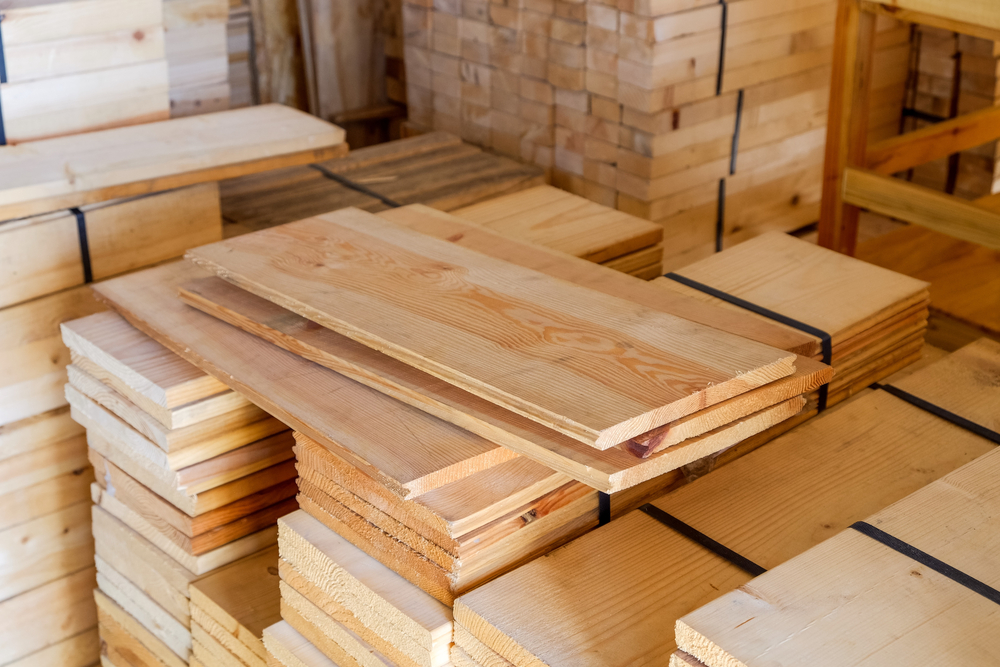
Types of Hardwood for Carpentry
When it comes to carpentry projects, hardwoods are a popular choice due to their durability, strength, and aesthetic appeal. There are several types of hardwood that are commonly used in carpentry, each with its own unique characteristics and applications.
Mahogany:
Mahogany is a reddish-brown hardwood with a straight grain. It is highly prized for its beauty and is often used in high-end furniture and musical instruments.
Cherry:
Cherry is a versatile hardwood that can be easily finished and stained. It is popular for architectural woodwork, furniture, and cabinets.
Oak:
Oak is a durable and rot-resistant hardwood. It is available in white and red varieties and is commonly used for furniture, flooring, and cabinets.
Maple:
Maple, both hard and soft varieties, offers stability and attractiveness. It is a popular choice for furniture and flooring due to its strength and appealing grain patterns.
Poplar:
Poplar is a soft hardwood that is known for its affordability and easy workability. It is often used in painted furniture and craft projects.
Birch:
Birch is a harder hardwood with a light-coloured appearance. It is commonly used for high-end furniture, toys, and even toothpicks.
Ash:
Ash is a strong hardwood that is valued for its bendability. It is commonly used for tool handles, furniture, and even baseball bats.
Other Wood Types for Carpentry
In addition to softwoods and hardwoods, there are several other wood types that can be used in carpentry projects. Each wood type has its own unique characteristics and applications, offering carpenters a wide range of options to choose from.
1. Walnut
Walnut is a highly prized hardwood known for its rich dark brown colour and strength. It is often used for veneers and high-end furniture, adding a touch of elegance to any carpentry project.
2. Pine
Pine, although classified as a softwood, is widely used in carpentry due to its versatility, affordability, and distinctive grain patterns. It is commonly used in furniture, interior trim, and decorative accents.
3. Redwood
Redwood, another softwood, is favoured for outdoor projects due to its natural resistance to decay and insect infestation. It is a popular choice for decks, fences, and outdoor furniture.
4. Mango
Mango is a sustainable hardwood that offers durability, affordability, and unique grain patterns. It is suitable for various carpentry projects, including furniture, flooring, and decorative items.
5. Yew
Yew, despite being classified as a softwood, is harder and more durable than many hardwoods. It is often used for small projects such as jewelry boxes, veneers, and musical instruments.
6. Acacia
Acacia is a hardwood known for its water resistance and strength. It has historically been used in shipbuilding and is now popular for furniture and woodworking projects.
With the wide variety of wood types available, carpenters can choose the one that best suits their project requirements, whether it’s a high-end furniture piece, an outdoor structure, or a decorative accent. Each wood type brings its own unique characteristics, adding beauty and functionality to carpentry projects.
Buying and Working with Different Wood Types
When it comes to carpentry projects, choosing the right wood is crucial. There are various factors to consider when buying wood, including the type of wood, its form, and its suitability for your project. Let’s explore the different aspects of buying and working with different wood types.
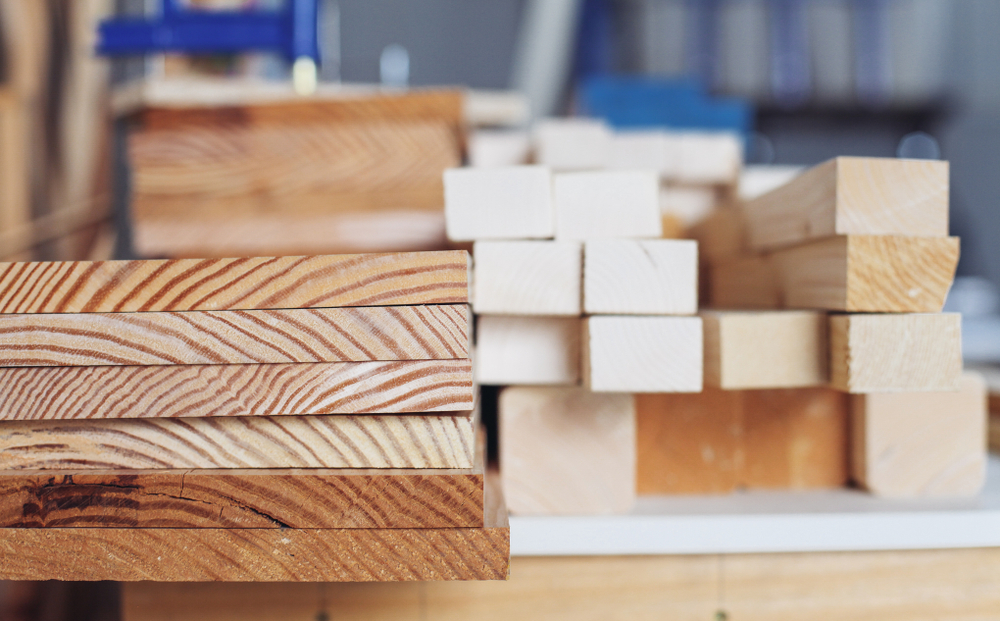
Types of Wood for Carpentry
Before buying wood, it’s important to understand the different types available and their characteristics. Common wood types used in carpentry include:
| Type of Wood | Description |
|---|---|
| Rough Sawn Timber | This type of wood has a rough surface and requires sanding and finishing before use. It’s ideal for custom projects that require specific dimensions. |
| Dressed Timber | Dressed timber has been smoothed and is ready for immediate use. It’s suitable for projects where a refined finish is desired. |
| Pre-Treated Timber | For outdoor projects, consider using pre-treated timber that is resistant to rot and decay. It provides added protection and ensures the longevity of your carpentry work. |
Working with different wood types also requires different techniques. Depending on the project and your skill level, you may need to cut, carve, or finish the wood.
Remember to choose the appropriate wood type based on your project requirements and skill level. Now that you understand the various aspects of buying and working with different wood types, you can confidently embark on your carpentry projects.
Conclusion
Choosing the right wood type for your carpentry projects is crucial in achieving the desired results. Whether you’re working with hardwoods or softwoods, each wood species possesses unique characteristics and applications. Understanding the differences between wood types, including their hardness, grain patterns, and resistance to elements, will empower you to make informed decisions and select the most suitable wood for your specific project.
When choosing wood for carpentry, consider factors such as durability, affordability, workability, and aesthetics. By carefully evaluating these aspects, you can ensure that the chosen wood type aligns with the project’s requirements and your skill level. Whether you’re building furniture, installing flooring, or undertaking other carpentry endeavours, utilizing the correct wood type can result in the creation of stunning, long-lasting pieces.
FAQ
What are the different types of wood used in carpentry?
Wood can be classified into two main categories: hardwood and softwood. Hardwoods come from deciduous trees, such as walnut, cherry, oak, mahogany, and maple. Softwoods come from conifer trees, including fir, redwood, pine, cedar, and spruce.
What is the difference between hardwood and softwood?
The primary difference lies in the type of trees they come from. Softwoods are harvested from conifer trees, which produce cones and have needles. Hardwoods, on the other hand, are milled from trees that don’t produce cones or needles.
What are some common types of softwood used in carpentry?
Some common types of softwood used by woodworkers include cedar, pine, redwood, fir, and spruce.
What are some popular hardwood species for carpentry?
Some popular hardwood species for carpentry include mahogany, cherry, oak, maple, poplar, birch, and ash.
Are there any other wood types used in carpentry?
Yes, besides hardwoods and softwoods, other wood types used in carpentry include walnut, pine, redwood, ash, birch, mango, yew, and acacia.
What factors should I consider when buying wood for carpentry?
When buying wood for carpentry projects, consider factors such as whether you need rough sawn timber or dressed timber, and if your project involves outdoor use, consider pre-treated timber that is resistant to rot and decay.
What should I know about working with different wood types?
Each type of wood requires different techniques for working with it, such as cutting, carving, and finishing. It’s important to choose the appropriate wood type based on your project requirements and skill level.
How important is choosing the right wood type for carpentry projects?
It is essential for achieving the desired results. Different wood species have unique characteristics and applications, so understanding the differences between wood types will help you make informed decisions and select the most appropriate wood for your specific project.
- Drill Battery Maintenance: Essential Tips for Cordless Drill Battery Care - February 5, 2024
- Troubleshooting Drill Issues - February 5, 2024
- Quick Drilling Techniques - February 2, 2024


